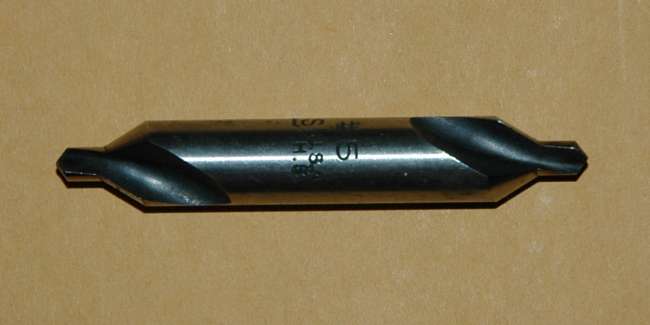
This is a picture of a center drill. Unlike a jobber drill with a split point, like you get in a hardware store, this drill has a very short and pointed tip. It won't "walk" when it contacts the surface that is being drilled, because it is much stiffer and shorter than a jobber drill. It can be used without first employing a center punch to mark the hole location. It is capable of drilling an angled hole without "walking". It does not drill very deeply before the countersink portion of the drill contacts the work piece. The drip points look like they might well have been drilled into the base plate using this kind of a drill. Note how the conical point of this drill matches the shape of the drip points in the previous photograph [id=194034046]. Since the base plate of the CD 157 mold is angled, not flat, I think it is likely that it was drilled with this kind of a tool. I believe that the "base dots" might have been make when the cutting edge of the countersink just barely touched the base plate as the drip point cavity was being drilled. The picture should make this clear. |